#tokyo dadaism
Text
one of two contributions from tremolo on the 1989 compilation, tokyo dadaism, hinata records, sublabel of conneca formed by aiha higurashi of hashika, known by a track on this compilation and their sole flexi single on the same label.
6 notes
·
View notes
Text
Pride of ownership
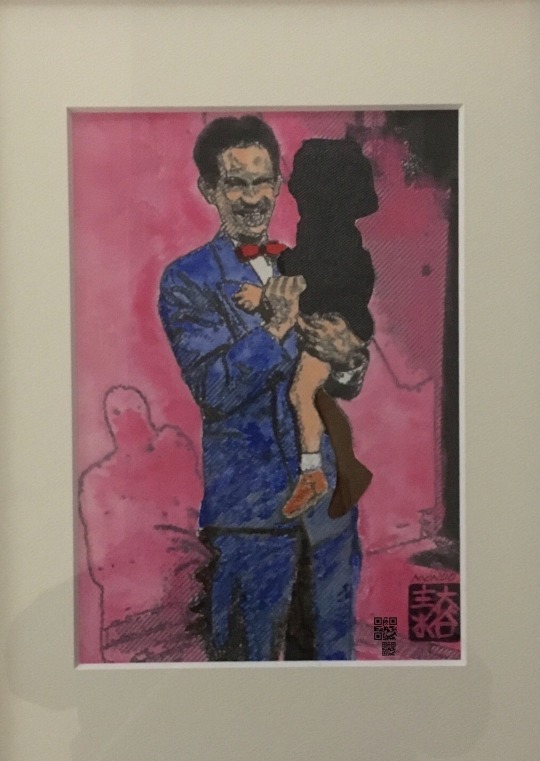
1 note
·
View note
Text
‘What’s the Plan?’ Presentation #2

Other Points of Inspiration: Theatre plays, video games, animations and films that helped inspire my brief.
youtube
Ubu Roi: Ubu Roi is a play by French writer Alfred Jarry. The production's single public performance baffled and offended audiences with its unruliness and obscenity. Considered to be a wild, bizarre and comic play, significant for the way it overturns cultural rules, norms and conventions, it is seen by 20th- and 21st-century scholars to have opened the door for what became known as modernism in the 20th century, and as a precursor to Dadaism, Surrealism and the Theatre of the Absurd.
youtube
Rimo Cocaron: An off-beat game where players zoom in camera style on items and then suggest them to the participants in a game. For example, the family enjoy a hot-pot and you can suggest adding soy sauce to the mother or reminding the father the heat from the hot-pot burner is intense and getting him to open the window to let the cat out. It's hard to explain, but a great concept.
youtube
Katamari Damacy: The player controls a diminutive character named the Prince as he rolls around an adhesive ball called a "katamari" to collect increasingly larger objects, ranging from coins to pencils to buildings, in order to build stars as ordered by his father, the King of All Cosmos.
youtube
The Flying Lunar Clipper - The film depicts a group of anthropomorphic fruits and other creatures who win a contest for a ticket on the first flight of a newly found Martin M-130 flying boat named the Flying Luna Clipper. Departing from Honolulu, they embark on a journey across the Pacific Ocean and watch short films on a 200-inch screen during the trip.
youtube
Juliet of the Spirits - Fellini’s first full length colour feature is also a homage to his wife, Giulietta Masina. She plays the title role of a repressed bourgeois housewife liberated by a pervasive and sensual spirit world. Fellini’s self-styled ‘adult fairy tale’ is a kaleidoscope of visual wonders complimented by a truly delightful Nino Rota score.
youtube
Three Examples of Myself as Queen - Anna Biller casts herself as a melancholic Arabian ruler, a queen bee presiding over a cotton-candy pink hive, and a 1960s teenybopper princess in this retro-fantastic feminist anthem - a colourful musical fantasy inspired by old Hollywood musicals.
youtube
Moon: Remix RPG Adventure - a deconstruction of the genre, set in the dreams of a child. Gather love, and save the souls of the innocent beings killed by "the hero".
youtube
The Seven Colors: Legend of PSY - This CD-ROM is an adventure game software designed based on the world of the pop music group PSY•S, and can be enjoyed by the people of all generations. Enjoy the adventurous heart-searching journey in PSY•S City full of poetry, graphic and music.
youtube
Yoshino’s Barber Shop - Yoshino is a respected barber who ensures that every young boy in her village has the same bowl-shaped haircut. When a boy with dyed hair arrives from Tokyo and refuses to conform to the town's haircut, he sparks a rebellion against Yoshino and village tradition - inciting a proverbial tug-of-war between tradition and new ideas.
3 notes
·
View notes
Text
Research Post: Neville Brody
Neville Brody is an English typographer, graphic designer and art director. Brody experiments with his self-made sans-serif typography with Pop Art and Dadaism influences. Brody has designed 23 font families, including: Arcadia, Industria, FF Blur, FF Gothic, FF Tokyo and FF Tyson. Many of his fonts were created in 1991, the same year as the album loveless released.


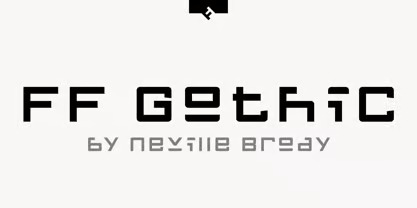

I also really like the flow of Brody's design work. I find the use of positive and negative space interesting.
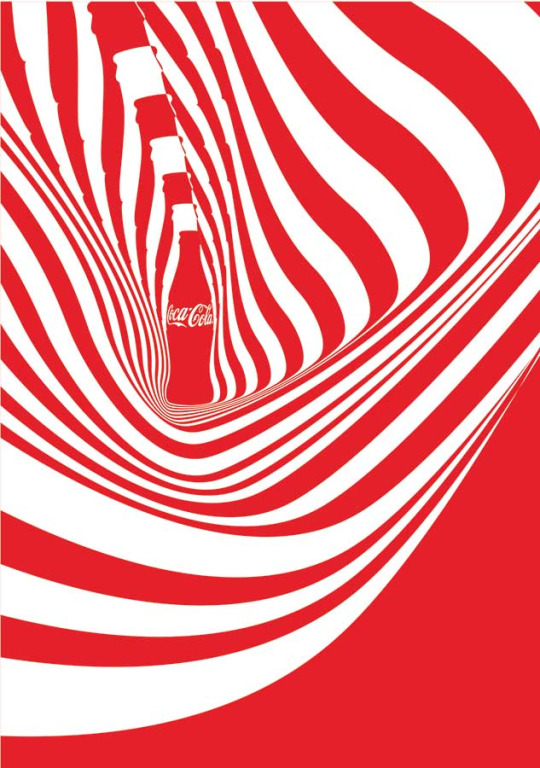
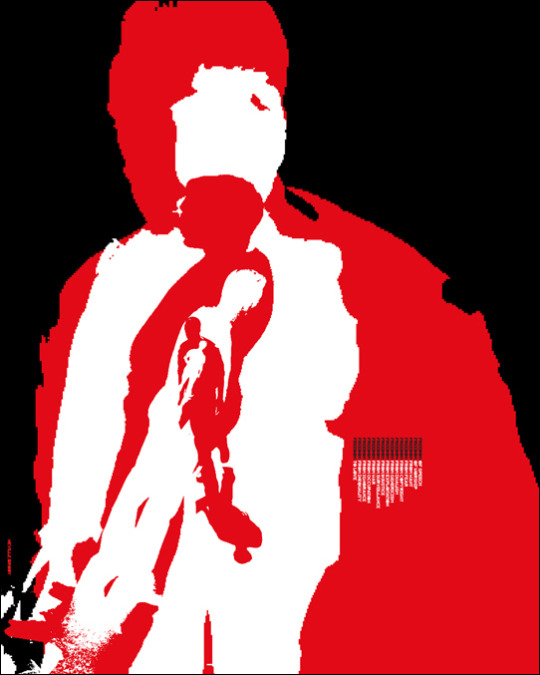
Brody has also designed many album covers. I like the bold colours he uses in these covers.



0 notes
Text
Despera: l’anime è ancora in progetto, ma se ne riparlerà nel 2022
A più di 10 anni dal reveal, proseguono gli sforzi di Chiaki Konaka e Yoshitoshi ABe per portare alla luce l’opera sci-fi.

Chiaki J. Konaka, autore di “Armitage III” e sceneggiatore di “Serial Experiments Lain” e “Texhnolyze”, ha rotto il lungo silenzio riguardo all’anime di “Despera”, tornando a parlare su Twitter dell’atteso, quanto travagliato, nuovo sci-fi psicologico nato dalla collaborazione con Yoshitoshi ABe, il creatore di “NieA Under 7″ e “Haibane Reinmei”, oltre che il celebre character designer di “Serial Experiments Lain” e “Texhnolyze”.
A causa della pandemia, il progetto è rimasto in sospeso per un anno e qualche mese. Il programma di finanziamento per la produzione, però, è stato completato all'80% e lo staff ha portato avanti di molto i lavori fino all'anno scorso. Purtroppo, essendo ripartiti solo da poco, Konaka non si aspetta di fare nessun nuovo annuncio fino al 2022 e ha chiesto ai fan di essere pazienti.
Ain è una ragazza di 14 anni che riesce a costruire dispositivi avanzati nonostante la mancanza del background scientifico necessario per essi. La storia di fantascienza è ambientata in Giappone, nel 1922, un anno prima del grande terremoto che colpì la zona di Tokyo.
Il progetto fu presentato a Seattle, in occasione del Sakura-Con del 2009. Inizialmente alla regia avrebbe dovuto esserci Ryutaro Nakamura (Kino no Tabi: The Beautiful World, Serial Experiments Lain, Ghost Hound), morto però nel 2013 dopo una lunga lotta contro il cancro. Nel 2015 ABe confermò la rinascita del progetto, dichiarando che i lavori sarebbero continuati con un nuovo regista, il cui nome ad oggi non è ancora stato rivelato.
Il titolo dell’opera deriva da una poesia del poeta dadaista Jun Tsuji (1884-1944). I 13 capitoli del romanzo, pubblicati fra il 2009 e il 2010, sono stati raccolti in un unico volume intitolato “Roman Album: Taishou Dennou Dadaism Emaki”.
* NON VUOI PERDERTI NEANCHE UN POST? ENTRA NEL CANALE TELEGRAM! *

Autore: SilenziO))) - Twitter @s1lenzi0
[FONTE]
#yoshitoshi abe#chiaki konaka#despera#anime#light novel#newsintheshell#animazione#news in the shell#cartoni animati#giappone
23 notes
·
View notes
Photo

SAD SAS N SOFT ME #DADAISM 📸: @iyonauniq . . しっかりと 目を開けて 拳を受ける己の愚かさを笑え。 地が額を打つ音を訓えに 待たれよ再び芽吹くその日は来る。 みんな火の鳥。 #いのちを燃やせ #諦めないで #arielmirai #fashion #harajuku #color #punk #SAD #mask #flower #anime #curlyhair #blackanese #dadasupreme #nike #drmartens #dollskill #スナップ写真 #ファッション #90s #ハーフ (Harajuku, Tokyo(原宿)) https://www.instagram.com/p/CC2OLcwFE3d/?igshid=99wmsdmk0g0d
#dadaism#いのちを燃やせ#諦めないで#arielmirai#fashion#harajuku#color#punk#sad#mask#flower#anime#curlyhair#blackanese#dadasupreme#nike#drmartens#dollskill#スナップ写真#ファッション#90s#ハーフ
5 notes
·
View notes
Text
Album Selection of 2019 | November
Yusuke Chiba -Snake on the Beach- - Shiosai [Sea roar] (27.11.2019) [★★★★★]

TRACKLIST
Shinsei (Nova)
Kujira (Whale)
Knock Knock Knock
Eden
Tobira (Door)
Tokyo
Byakuya (White night)
Deadly Drive
Amaoto (Rain sound)
Ryuuhyou (Drift ice)
Yochou (Omen)
Jikan no kanata (Beyond time)
Carina
Kaika (Flowering)
Haru (Spring)
Yuuhi (Sunset)
Shounen (Boy)
Dezert - Black Hole (27.11.2019) [★★★★★]

TRACKLIST
Dark in Black Hole
Bakemono (Monster)
Thirsty?
Migite (Right hand)
Hakuchi (Lodging)
Call of Rescue
Hantomei wo taberu. (Eat translucent.)
Gohatto (Taboo)
Shinkei to juryoku (Nerves and gravity)
Tenshi no zentoyo (Angel frontal lobe)
Rhapsody in my Head
Kansen shoujo (Infected girl)
True Man
I’m sorry
Rei - Seven (13.11.2019) [★★★★★]

TRACKLIST
Territory Blues
Connection
U R Goin’
Dance Dance
Little Heart
Tourbillon
Bon Appetite!
Sengoku Jidai -The Age of Civil Wars- - Shippu jinrai [Gale storm] (06.11.2019) [★★★★]
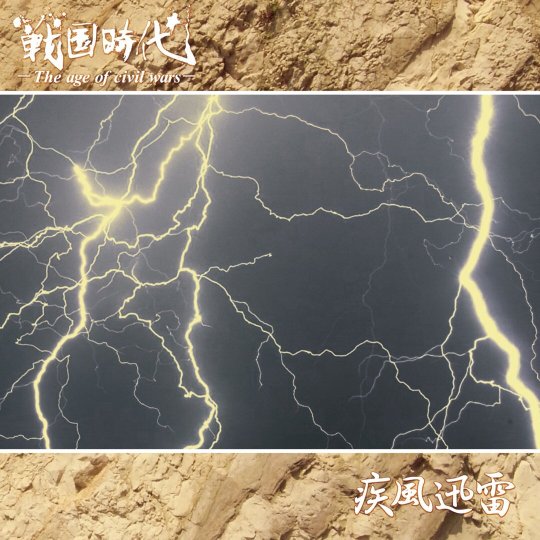
TRACKLIST
Ginro (Silver wolf)
Kabukimono -Hana to nare- (Stranger -Becoming flower-)
Sengoku Big Bang
Hariko no tora (Paper tiger)
Ge.ko.ku.jo (
Yoi hanabi kasumi ga kure (Evening fireworks)
Dokugan (Monocular)
Namidaboshi (Teary star)
Abaredaiko (Violent drum)
Kazahana (Snow on the wind)
Dadaroma - Dadaism #5 (13.11.2019) [★★★★]
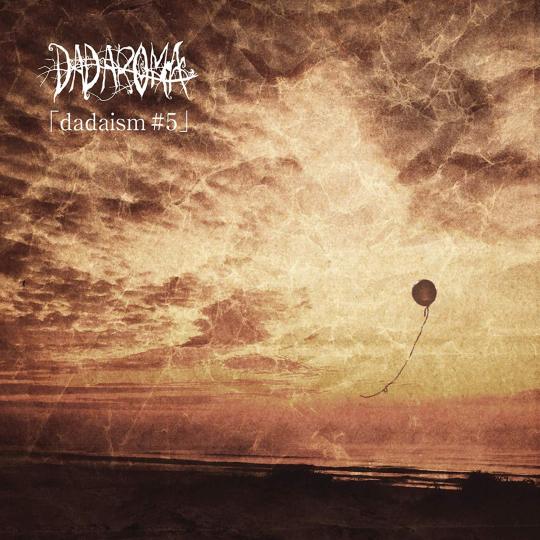
TRACKLIST
Twinkle Twinkle Star
Enzen (The very thing itself)
Keidoro (Hide and seek)
Kabukichou no onna (Kabukichou woman)
Pierrot no uta (Pierrot song)
「DAY BY DAY」
「Pornograph」 (piano ver.)
HONORABLE MENTIONS
ARTiCLEAR - Reimeiki no yume [Early days dream] (27.11.2019)

TRACKLIST
pluviam
Reimei no namidaame (Early days tears of rain)
Solitudart
Senkou to kadou (Drilling and swirling)
Invisidia
Heiraku no 「Kimi」 e (In your blue sky)
The Genius Orchestration - Spread Your Wings (06.11.2019)

TRACKLIST
Spread Your Wings
Never Ending Future
Be Awake
Evils
A far of distance
Penicillin - Kyuuryuu atama -Kowloon Head- (06.11.2019)

TRACKLIST
Kyuuryuu atama
Sex
The pain song of the beast
Sabaku no Basilisk (Desert basilisk)
Too young to die!
Kiri otosareta tsubasa (Cut the wings)
Ningen shikkaku (Human disqualification)
TO BE CONTINUED...
#yusuke chiba -snake on the beach-#dezert#rei#sengoku jidai -the age of civil wars-#dadaroma#articlear#the genius orchestration#penicillin#jrock#visual kei#jpop#alternative#heavy metal#dark#album selection
13 notes
·
View notes
Text

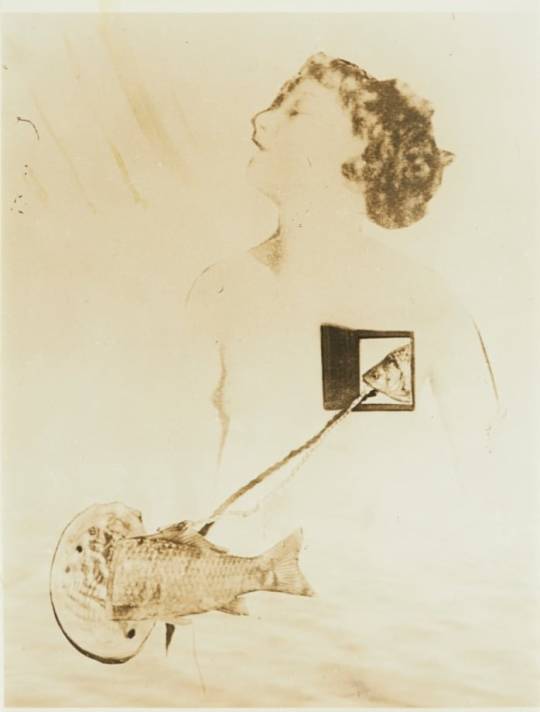


Kansuke Yamamoto (In this Japanese name, the family name is Yamamoto; 30 March 1914 – 2 April 1987); photographer and poet. He was a prominent Japanese surrealist born in Nagoya, Japan. He often created works which indicated liberty, antiwar and anti-government in surrealistic ways.
Born in Naka-ku, Nagoya, Aichi, Japan, the oldest son of Goro Yamamoto, founding member of Aiyu Photography Club. Goro ran a photo studio and a shop selling cameras in Nagoya.
He encountered surrealism and dadaism through the poetry magazine "cine´" published by Yamanaka Chiruu, who was promoting surrealism in Japan. In 1929, at 15, when he graduated from the Nagoya Second Commercial School, he started writing poetry. Before graduation, he left Meiji University School of Arts and letters in Tokyo, where he majored in French Literature and then went back to Nagoya. In 1931, at 17, he published his works in the Journal "Dokuritsu (Independent)", published by "Dokuritsu Shashin Kenkyu Kai (Independent Photography Research Association)".
The oldest of his existing works, "Aru Ningen no Shisou no Hatten... Moya to Shinshitsu (The Developing Thought of a Human... Mist and Bedroom)", was published in a magazine in 1932. In 1936, he changed his Chinese [sic] characters from 勘助 (Kansuke) to 悍右 (Kansuke). In 1938, he started a surrealist poetry magazine called "Yoru no Funsui (The Night's Fountain)". But the next year, the publication was forced to discontinue by the authoritative pressure due to the Peace Preservation Law.
In 1939, he formed a group called "Nagoya Photo Avant-Garde" with Tajima Tsugio, Minoru Sakata, Shimozato Yoshio, and Yamanaka Chiruu, etc. ....
From around 1965 to 1975, he coached the younger generation as an adviser of Chubu Photography Federation of Students.
He also donated his body to science via Nagoya University School of Medicine upon his death and no funeral was held, in accordance with his living will.
(https://en.wikipedia.org/wiki/Kansuke_Yamamoto_(artist))
via: https://arthur.io/art/kansuke-yamamoto
0 notes
Text
Hiroshi Sugimoto
Hiroshi Sugimoto is a Japanese photographer and architect. He was born in 1948 in Japan, and divides his time between Tokyo and New York City. Primarily a photographer since the 1970s. Grounded in technical mastery of the classical photographic tradition, his work has explored the ways photography can record traces of invisible but elemental forces. Sugimoto’s major series include Dioramas, Theaters, Seascapes, Portraits, Architecture, Colours of Shadow, Conceptual Forms, and Lightning Fields, among others.
He Is best known for his highly-technical, mysterious black-and-white images fashioned through a combination of a 19th-century large-format camera, signature long exposures and 20cm x 25cm negatives. There’s almost a meditative quality to his art, even while he’s influenced by Surrealism and Dadaism, especially Marcel Duchamp.
Having a special relationship with the passage of time, he views his work as a method for preserving time and memories;-
“It is a medium for recording time and history, a quality I use in my work. For me, photography is a kind of time machine. I can travel back in history and confront it with the future. I can almost bring back the dead to our world. That’s the magic of photography.”
My favourite project by Sugimosto is his Theatre series. What he does is not a matter of just going in and taking a picture of a movie theatre, what he does is he shoots throughout the entire duration of a film. it gives this element of time expanse in his work that is very important. Each shot would be a different time exposure usually being an hour and a half or sometimes 3 hours. I really enjoy the somewhat haunting images of the dimly lit areas that are just lit by the film itself which is a highly conceptual and interesting way to display movie theatres.
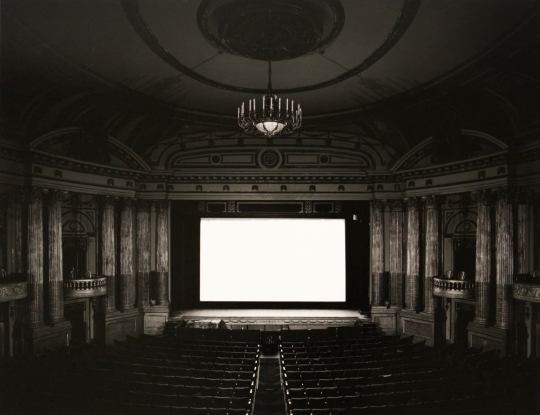

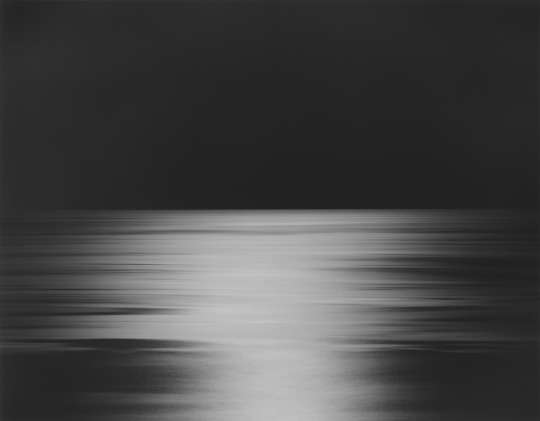

0 notes
Text
Shinjuku, the other story
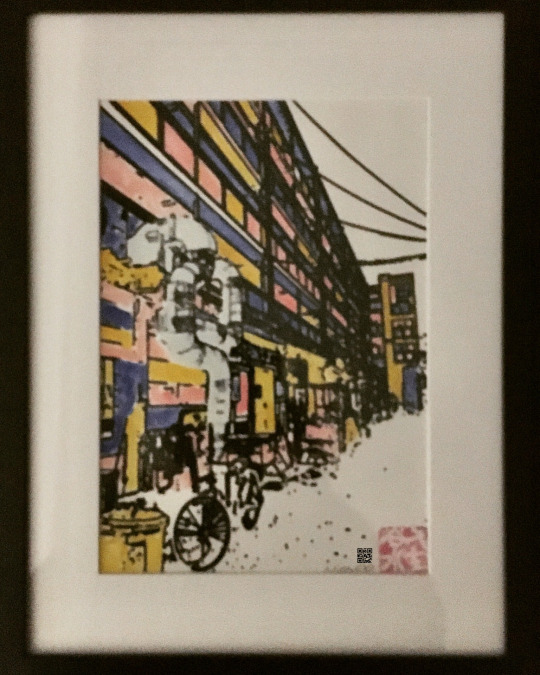
Song I was listening to:Saho Terao, 'Maho mitai' (Like Magic)
0 notes
Text
Critical Review
My work explores the concept of transformation. In the beginning it was my intention to capture the ephemeral, an idea which I had whilst on a walk. Walking had become a kind of therapy for me during the lockdown as I had been confined at home - I have been saying in jest for the past year I’m on house arrest and my walks are my yard time, but I concede that’s an over exaggeration, even if it felt like it sometimes. The act of walking was my slice of the day where I could be on autopilot; it allowed me the time to just walk and think. Being in nature, I was observing the plants and flowers and began collecting them. I wanted to preserve my collection, to shift them from ephemeral to permanent objects. I primarily used air drying clay to achieve this, which I pressed my flowers into to create moulds from which I could take a positive cast. I had spent a few months perfecting this technique and working to this process and had eventually stockpiled a collection of botanical tiles in different colours and sizes, but my concept had stagnated somewhat by this point, similarly my daily walking route which I had enjoyed had begun feeling like an obligation. The repetition became tedious and is analogous of how I was feeling during lockdown; autopilot had lost its novelty. I had realised that my daily practice was like a production line, where I was manufacturing my art in batches from a mould and repeating the process. I began thinking about the modern world and particularly how technology and mass manufacturing had played a vital role in the worldwide response to the pandemic. I was interested in where the line is drawn between functional design and a work of art and sought to explore this in my project, which saw its own transformation going forward.
The everyday object reimagined as fine art has been a subject of intrigue among artists and art lovers since the early Twentieth Century. Since the ready-made’s of Marcel Duchamp, the bounds of art have been redefined. The subject expanded in the 1960’s with the emergence of the Pop Art movement, with such artists such as Claes Oldenberg and Andy Warhol who created whimsical replicas of common household items, transforming the functional object into ornamental sculpture. In particular, Warhol’s work was a response to consumer culture, which transformed certain household brands into art world icons synonymous with his name.
By looking at Dadaism, Surrealism and Pop Art, we can see some of the varying ways in which objects have been used in the past. The object form has been used as a means of expression of self, as a form that can be metamorphosed into things created from imagination, as a technical means of expression, as a social statement on society, and as a means of creating art which questions art itself. (Hanna, 1988)
Today, the everyday object as art remains a pervasive subject in contemporary art. Tokyo-based artist Makiko Azakami is one such artist who transforms everyday objects by using only paper for her lifelike sculptures; ‘through careful cutting and meticulous handcrafting, Azakami breathes new life into humdrum objects and creates pieces that are deceptively fragile and extraordinarily detail-oriented’ (Richman-Abdou, 2016). Korean artist Do Ho Suh creates lifesize object-replicas of fittings and appliances around his apartment using wire and polyester fabric netting. The use of these materials transforms the objects from functional to ornamental whilst retaining their defunct detail, reframing the domestic object, and wider domestic space, as sculpture. ‘The transparency of the fabrics…is important conceptually because I’m trying to communicate something of the permeability in the ways in which we construct ourselves’ (Suh, 2020). Other contemporary artists use found objects in their work, which serve a specific purpose that the artist abandons, choosing to elevate the mundane to the realm of fine art, and dissolve the boundaries between “high” and “low” forms of culture. (Artnet News, 2017).
In my own practice, I chose to study the everyday object of the lightswitch, the idea of which was suggested to me during a presentation of my work. I had built my installation around a lightswitch on my studio wall, an unconscious choice on my part, perhaps going to show just how on autopilot I was. I was interested in replicating the lightswitches around my home using subversive materials and experimenting with installations. I began by taking clay impressions of the lightswitches around my home from which I could make positive casts. This made me think about automation; I felt that the repetition of taking casts from a mould was similar to a production line, and I was the machine, similar to Warhol’s production line process of silkscreen printing, as Bergin writes: ‘The Machine is, to the artist, a way of life, representative of a unique field of twentieth-century experience, and all of Warhol’s art is striving to express the machine in the machine’s own terms’ (Bergin, 1967). Perhaps all art has an agenda; is any art made just for the joy of it? Or is it just to fulfil some demand? I began to wonder if all art, except for the earliest cave paintings, was produced purely to be consumed. If Warhol’s brillo boxes represent the collapse of the boundary between artistic creation and mass production (Baum, 2008), then where exactly is the boundary? I came to the conclusion that any commodifiable artwork is a product, and creating art is just another form of production for consumption.
When I had my finished clay tile with a porcelain effect painted finish, I installed it on my kitchen wall and it at first glance appears to be a standard lightswitch, however when examined up close the viewers expectation is subverted, as you can see that it is a handmade replica. The functional design of the lightswitch is reimagined through the materiality of natural clay, transforming the object from a functional design into an ornamental replica. I had made many clay lightswitches already, and wanted to explore other subversive materials to utilise. Inspired by Rachel Whitereads resin replicas of doors, I began making coloured resin casts from my existing silicone mould, adding a different coloured resin pigment each time. Displayed as stacked on backlit shelves, the work invites the viewer to peruse as though they were in a supermarket, highlighting that art is another form of production for consumption in the modern world.
I then began thinking about scale, but this time I wanted to use the intangible material of light itself as my medium. Using my transparent coloured resin tiles and a light projector, I projected onto my studio walls. This opened up a door to working digitally, working with media such as video and photoshop. Working in this way allowed me to explore scale as freely as I liked without time or space constraints. I began thinking that digital media is an imitation of the real thing. My projections, for example, are not really lightswitches, they are replicas of lightswitches made from the material of refracted light waves. My video gifs and my photoshopped site specific work are just information converted to binary numbers and translated into pixels on a screen. I think in this way, digital and electronic media are the ultimate subversive material.
Overall, my project experienced a dramatic transformation. In the beginning, lockdown had only just begun and it was a new experience. Fourteen drudgerous months later, I am not the same person I was then. The whole world has had its own dystopian transformation, where we now so heavily rely on technology to survive. We have surrendered authentic experience for a pale imitation of the real thing. Our New Normal is just a replica of the life we left behind, subversive in the way that at a superficial glance all remains the same, but on closer inspection is just a substitution. As I made my tiles I was a machine, so too have we become machine men; just pixels on a screen or voices on the end of a line, a replica of the blood and cells and sinew and breath and acne that made us really human.
Artnet News In Partnership With Cartier, (2017) ‘11 Everyday Objects Transformed Into Extraordinary Works of Art’, artnet.com. Article published May 9, 2017. Available at: https://news.artnet.com/art-world/making-art-from-mundane-materials-900188.
Baum, R (2008) ‘The Mirror of Consumption’, essay published in Andy Warhol by Andy Warhol . Available at: https://www.fitnyc.edu/files/pdfs/Baum_Warhol_Text.pdf. p.29.
Bergin, P (1967) ‘Andy Warhol: The Artist as Machine’, Art Journal XXVI, no.4. Available at: https://www.yumpu.com/en/document/read/8274194/andy-warhol-the-artist-as-machinepdf-american-dan. p.359.
Hanna, A (1988) OBJECTS AS SUBJECT: WORKS BY CLAES OLDENBURG, JASPER JOHNS, AND JIM DINE, Colorado State University Fort Collins, Colorado, Spring 1988. Available at: https://mountainscholar.org/bitstream/handle/10217/179413/STUF_1001_Hanna_Ayn_Objects.pdf?sequence=1
Richman-Abdou, K (2016) ‘Realistic Paper Sculptures of Everyday Objects Transform the Mundane Into Works of Art’ , Mymodernmet.com. Article published October 20, 2016. Available at: https://mymodernmet.com/makiko-akizami-paper-sculptures/?context=featured&scid=social67574196&adbid=794911171832901632&adbpl=tw&adbpr=63786611#.WB3vIQMclAU.pinterest.
Suh, D H (2020) HOW ARTIST DO HO SUH FULLY REIMAGINES THE IDEA OF HOME, crfashionbook.com. Article published MAY 22, 2020. Available at: https://www.crfashionbook.com/mens/a32626813/do-ho-suh-fully-artist-interview-home-korea/
1 note
·
View note
Text
Wings of Return: Yi Sang’s House, by Don Mee Choi
I have spoken French for more than thirty years, I have written in French for twenty years, but I still don’t know it. I don’t speak it without mistakes, and I can only write it with the help of dictionaries, which I frequently consult.
It is for this reason that I call the French language an enemy language. There is a further reason, the most serious of all: this language is killing my mother tongue.
(from The Illiterate by Agota Kristof, translated by Nina Bogin)

Last December, I was able to spend a month in Seoul for a translation residency funded by the Korea Literature Translation Institute (LTI-Korea). I stayed in Downtown Seoul, next to the Gwanghwamun Square and the beautiful Gyeongbokgung and Changdeokgung palaces I used to run around in with my siblings when I was a child. I was also within walking distance of Yi Sang’s House. (Wave Books is bringing out a book of Yi Sang in 2019: poems in Korean translated by Jack Jung, poems in Japanese translated by Sawako Nakayasu, two short stories translated by Joyelle McSweeney and myself, including several reproductions of his original poems and drawings.) Yi Sang (1910-1937), trained as an architect, was an influential avant-garde poet and writer. He lived here from age one to twenty-three, raised by his well-off uncle and his wife. The house itself is not the original house, but this site was where his uncle’s house used to stand. I thought the design of the house beautifully mirrored the interiority of Yi Sang’s and his protagonists’ psyche—his protagonists are often idle, penniless, tuberculosis-ridden artists, holed up in dark rooms. (I don’t mean to boast, but I was treated for TB as a child. Unfortunately, Yi Sang died from TB at the young age of twenty-seven, in Tokyo.) As you walk through the front glass door, you see a dark metal door that opens up to an almost pitch-dark chamber.

Poet Kim Hyesoon, who showed me where Yi Sang’s House was, pointed out that this dark space used to be an attic. In traditional Korean houses, in the main room of the house where guests are also received (traditionally, this is a room where men sat in and pretended to be scholarly, but who knows what they really did while women toiled away, cleaning up after their mess—it could be thought of as a living room, but, for my family, it turned into a bedroom at night) there is a sliding paper door that opens up to an attic. It’s an ideal space for any child. I spent many hours gazing down at our tiny courtyard from the attic window because everyone and everything looked so different from that vantage point. During summers, I lied down with my tummy against the cool, bare floor of the attic and read for hours, trying to forget about the heat.

Inside the attic chamber, slides of Yi Sang’s work, including his drawings were projected onto a wall. Experimentalist Yi Sang and his contemporaries were strongly influenced by European Modernism, particularly Dadaism and Surrealism, which came to be introduced in Korea mostly through Japanese translation during the occupation (1910-1945). One of his protagonists, who is Yi Sang himself, mentions “COCTEAU” and says that he used to order postcards from the International Modern Art Exhibitions held in Tokyo. The slide below is a cover designed by Yi Sang for a journal in Japanese called, Chosŏn [Korea] and Architecture, 1930. Some of his experimental poems in Japanese were published in it.
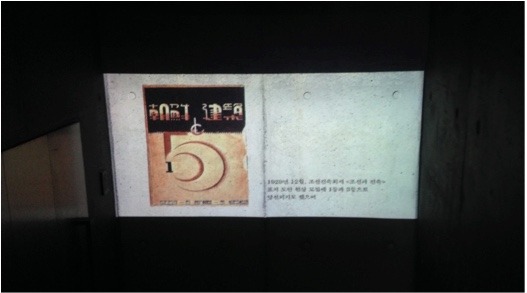
In the short stories Joyelle and I are translating, Yi Sang utilizes Korean transliteration of English and French words, which was thought to be a radical thing to do at the time. But writing and publishing in Korean was even more of a radical thing. Writing and publishing in Korean signaled a political opposition, a literary resistance to the Japanese colonial rule. I was initially introduced to Yi Sang’s work through my father’s love of his work. He told me several times that he read Yi Sang late into the night in order to forget about his hunger, that Yi Sang’s stories helped him through his bleak childhood. Yi Sang’s stories are bleak, yet there is also much humor in them through self-mockery. Even now, my father is thoroughly disappointed when we don’t pick up on his subtle sarcasm right away. My father must have identified with Yi Sang’s helpless, emaciated, hungry male artist figures who somehow managed to get through another day of drab.
For Yi Sang and my father, Japanese was their colonial language as English is a colonial language for me. We did not choose it, it chose us, historically, and that’s the nature of a colonial language. It finds you—it can even track you down via the Terminal High Altitude Area Defense (THAAD) anti-missile system—and makes a foreigner out of you in your own country, which is to say, your home is no longer your home. How else would you explain a posh, corporate-owned golf course instantly turn into a military installation site for THAAD? And you remain as a colonial immigrant within or without. I am a foreigner there as I am here. Hence, the most poignant thing I noticed while translating Yi Sang was how his protagonists were coping with their homesickness in Tokyo as well as at home in Seoul. Yi Sang’s use of foreign words signal homesickness, a state of perpetual colonial exile.
I am self-trained, but well-trained, nevertheless, in detecting homesickness. I rely on my attic vantage point when translating. And translation is a coping mechanism for homesickness, my wings of return. Yet, it is also a painfully difficult task for me because I still have to face the shame of my imperfect colonial language. I was once so angry about it that I refused to speak it for an entire year. I pretended that I didn’t understand it at all. I was a child then. I’m much older now and lack such drastic courage.
Happy language! Shame is attached to syntax. Seal it or numb it. Most terrible pain you can imagine. Ask OED! In my house, the shoed are put to sleep and shoeless forever depart. Going to dooms of napalm! (“From Noon – To All Surviving Butterflies,” The Morning News Is Exciting)
Yi Sang’s House offers us a way out of pain. Inside the dark attic, there is a very narrow staircase, as if it was built for a child, that takes you up to a tiny balcony—it’s more like a perch. Now you can look down at the small court yard. This is Yi Sang’s vantage point, his Crow’s Eye View (1934), a collection of poems.

Don Mee Choi, Seattle
September 6, 2017
5 notes
·
View notes
Text
Seiko Oomori - kitixxxgaia - Review
If you’ve read this blog before, you probably have a pretty good idea of my completely unbiased admiration for Seiko Oomori and everything she does. “Unbiased”.
So let’s just get to it. Less than a year, by about two weeks maybe to be precise, Seiko Oomori follows up her critically acclaimed major sophomore album (fourth overall) TOKYO BLACK HOLE with something even bigger, even more political, even more honest, and even more ambitious. I’m going to start off by changing my previous opinion. TOKYO BLACK HOLE is like an 8.5 now. Stay with me, here now and buckle up; we’re going for a ride, my friends.

The same week the United States got unleashed with the marvel of Drake’s More Life – a notably emotional return to form that also doesn’t shy away too far from the newer territory Toronto’s first celebratory hero has been invading – Japan was hit with something similarly parallel. Seiko Oomori gave us her fifth album kitixxxgaia on March 15th. Just like Drizzy, Seiko has given us an equally emotional experience, that still covers her recent sounds while almost giving us a slight return to her punk roots save for the general lack of an obvious acoustic guitar in most of the mixes (though it’s worth noting that it’s still there, just buried in the mix; I’ll get to why such a jam-packed mix actually works in a minute).
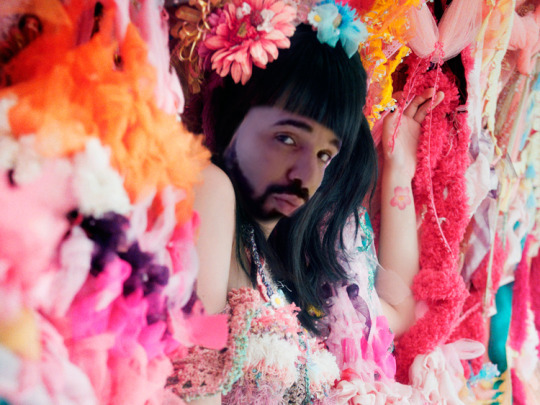
It’s amazing to see that the west and the east were both delivered promising projects by two of their biggest masters of music and emotion. It’s amazing to see just how far some shitty kid from Koenji has come in just five years since her official debut PINK in 2012. It’s amazing to think that that’s six albums if you count PINK, seven if you count the mostly self-covering Pink Tokarev album of 2015, which was otherwise an off-year for everyone’s favorite singer to imitate.
The only word I can describe how kitixxxgaia sounds with is “big”. And several other adjectives. Maybe “gigantic”. Maybe “colossal”. It’s a fucking huge album, pardon my French. This is potentially Seiko’s first Ringo Sheena-level album (let’s just forget that SUNNY happened for a minute). There’s a lot of religious imagery and a heavy aesthetic. I’d highly suggest on your first listen, you watch the music videos for every song that has one. So start with the “Dogma Magma” video, then the “Hikokuminteki Hero” video, listen to “IDOL SONG” normally, then when “Gutto Kuru Summer” comes along, watch that video too. And so on.
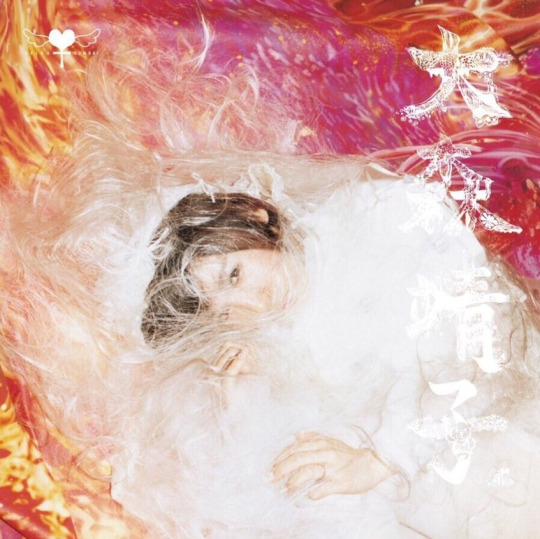
kitixxxgaia is heavy in its use of a very specific aesthetic, which takes influence from Christianity (and a hint of Mexican-style Christianity at that), weddings, quite a bit of Dadaism, and it’s all absolutely drenched in shades of pink and lighter blues. It’s the kind of album that’s best to be experienced both by listening and watching, as I said before. There are heaps of promotional images that came along with the album and the original “holy trinity” singles that lead up to its release, and I’d suggest maybe even just looking through those around Twitter and wherever else you can find them (maybe I’ll compile what I can find and make a post later this week) while you listen to the songs that aren’t accompanied by music videos. It’s the kind of multi-media work that could induce a sensory-overload in someone with synesthesia, like myself.
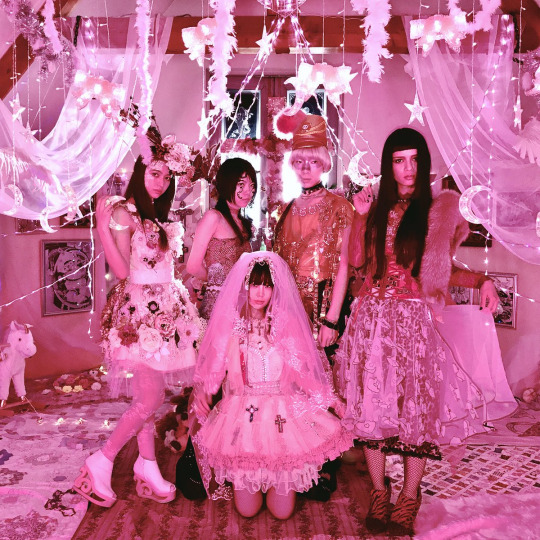
Now before I even get into the music of it, I want to point out the name of the album itself. Just the name kitixxxgaia (say it in English how you want, I generally say “Kitty Gaia”), much like her lyrics, takes some wordplay. In Japanese, the word “kichigai” - short for “[anta no] ki ga chigaimasu”, though nobody would ever say it that formally - is essentially the closest the Japanese language can get to the level of offense that words like (cover your children’s eyes) “fuck” or “cunt”. It doesn’t mean the same thing, but it’s that sort of level of offense, though deeper seeing as Japan is culturally much more introverted than we are over here.
Kichigai could loosely be translated to “you’re fucking crazy, man; you’re out of your goddamn mind.” Not in like a “woah dude that’s a fucking siiiick tattoo of a wolf” kind of way, though. It’s an insult, not a term of endearment. Adding the “a” to the end, Seiko turns it into “kichigaia” (キチガイア). After a day or two, she officially changed the name to romaji, now calling it “kitixxxgaia”, censoring it (possibly for management, cultural, and radio airplay reasons, but we don’t know specifically) by making it English and with three x’s in the middle. This name, to me, holds two simultaneous meanings, again, much like her signature style of lyricism.
The “kiti” could be interpreted as “kitschy”, a word referring to style in poor taste, much like our girl Seiko’s aesthetic. The word “gaia” is the personification of our planet Earth in ancient Greek texts. So it’s a “Kitschy World”.
“kitixxxgaia” in its original meaning, “Crazy Fucking World”.
Now to the music: Seiko has never let us down with a strong opener, and this might be the most in-your-face, unexpected opener, titled “Dogma Magma”. “Come on up to the emotional stage!” she blurts out before a gong bangs in your face; the remainder of the measure in silence before another hits with a choir on top, just underneath a piano playing downward arpeggios, and below that, some intricate string work, each instrument holding its breath. After the four bar intro, we crescendo up to the main song. Enter a not-quite shibuya-kei type beat – syncopated and staccato-like drums underneath a jittery, major piano progression. Behind it all is Seiko’s voice distorted, seemingly having a conversation with God.
As the filter cuts off, Seiko enters with some of her most provoking, forward lyrics ever written: (rough translation by yours truly): "Once upon a time there was something other than [just] male and female. Once upon a time there was something other than [just] white, black, and yellow [people]. Once upon a time there was something other than [just] yes and no. These things had always always existed, but it was then instead decided that they didn’t [exist].” she sings, touching on the recently hot topics of gender, race, and consent.
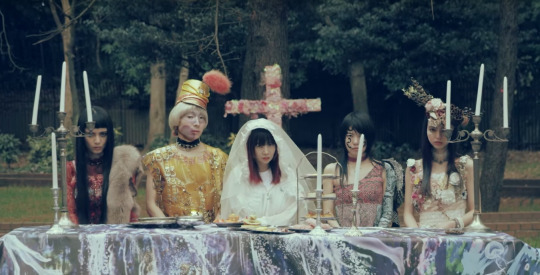
She continues “When I opened my eyes I was Japanese. I’m a goddess but I’m too uncomfortable in this inconvenient body to go outside without makeup on.”, a clear reference to body positivity clashing with self-esteem issues, and likely even cultural pressure in Japanese society. “Dogma Magma” has cuts into a more punk style chorus, reminiscent of “Magic Mirror”. “What will you do during the revolution? Just one heart? Fuck you, fuck [you] all, because this is war!” There she is. That’s the Seiko we know and love.
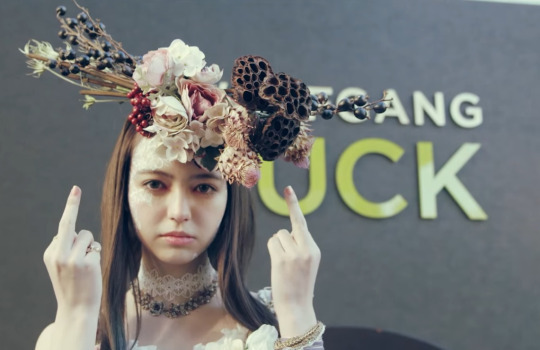
Track three is of note because it sort of takes me back to when she used to advertise herself as an idol during the Zettai Shoujo era for extra shock value. A clever parody on idol music and culture, “IDOL SONG” could almost pass off as a generic denpa song à la Band Ja Naimon!.
“JI・MO・TO no Kao Kawaii Tomodachi” (roughly “JI・MO・TO’s Cute-Faced Friend”) is certainly one of her most out-there songs, with a catchy, sugary hook, an almost rap verse not too different from what she did with “Zettai Kanojo”. It’s light, it’s bouncy, and it’s really good. This whole album is really good. Good. Good. Good. Good. It’s good music (Cruel Winter, when? I need answers, Kanye!).
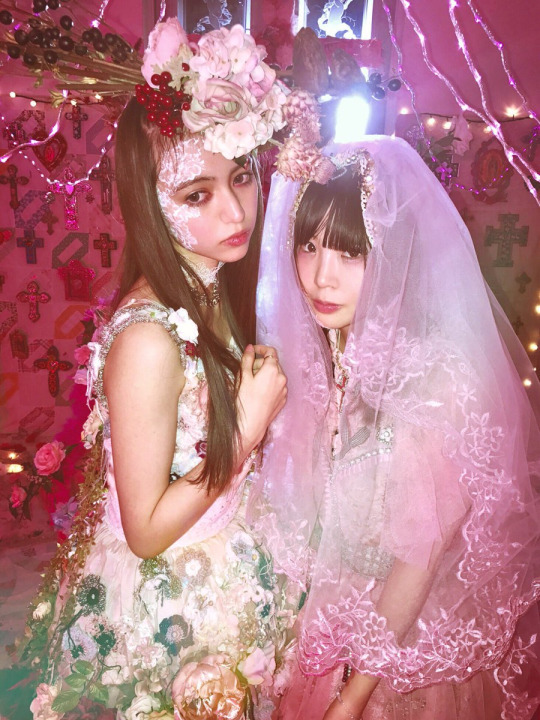
Speaking of rapping, two songs later, Seiko gives us the ultimate collab for this generation of J-pop. Much like Ringo Sheena and Utada Hikaru’s “Nijikan Dake no Vacation” (roughly “A Vacation For Just The Two Of Us”), “Chikyuu Saigo no Futari” (roughly: “The Last Two People on Earth”) opens up eerily, with a huge texture and an oozing sub bass that launches into this groovy, dark, rhythmic masterpiece. Seiko begins “Dora-chan, warmest welcome to the 21st century, where mass production has made humans more like robots. Justice is brought by violence, the death penalty is given immediately unless you’re cute.” Seiko is soon interrupted: “I’m being forced to be stupid, these frames in front of me are out of my league. Fuck you, guidance! In my head, I’m punk.” Is that voice DAOKO? You bet your ass it is, and she is spitting that truth all over this track.

God there’s so much more to cover for this album but I really don’t want to ruin too much of it by blabbing on. Up next, continuing with the album’s religious themes “Pink Methuselah” brings a familiar sound with a twist – once it kicks in, it’s very clearly Kenta Sakurai (ex. Izukoneko, current Maison Book Girl, TOKYO BLACK HOLE’s “SHINPIN” producer) behind the producer’s chair on this one, but unlike “SHINPIN” from Seiko’s previous album, it’s not just another Sakurai song. It’s very clear how much Seiko added on top of what he did, and it’s like the perfect blend of both of their signature styles.

The album also features a menacing, full-piano self-cover of °C-ute’s “Mugen Climax”, a song that Seiko wrote for the extremely popular Hello! Project group. Now, she’ll never avoid Ringo Sheena comparisons – after all, Oomori’s debut album Mahou Ga…’s artwork pays direct tribute to Sheena’s legendary 2000 album Shouso Strip’s artwork - but what hearing this self-cover (which makes °C-ute’s version almost unlistenable) makes me want is a self-cover album from Seiko once she garners enough writing credits, much like Ringo Sheena’s Utaite Myouri.
The thing here about kitixxxgaia is that the album finishes off differently depending on the version you have. There are three versions: Dogma, Karma, and Gaia. Every version comes with a second “disc” that’s a DVD/Blu Ray; Dogma comes with a live Blu Ray of ZEPP Tokyo stop of the Tokyo Black Hole Tour, Gaia comes with live audio of that same show as well as a DVD of all of the album’s music videos, and Karma comes with a live DVD of a few different shows from last year. Each version also has a key difference to the main album – the final track is different.

As my personal recommendation, Dogma is the ideal version. Karma and Gaia finish off with new songs, but Dogma closes out with an acoustic re-recording of the Zettai Shoujo single “Kimi to Eiga” (literally: “Movie With You”). Since the closest thing we get to ‘acoustic’ on kitixxxgaia is “Mugen Climax” and “Orion Za”, this is a necessity to the album’s closure and really puts into perspective just how far Seiko has come since her humble beginnings.

The Karma song is called “Ramen no Hanashi” (literally “Ramen Conversation”) and the Gaia song is called “M”. “M” is another piano song, cutting in at just over 6 minutes. “Ramen no Hanashi” also does a similar job to “Kimi to Eiga”, being a full-acoustic track, and it’s a bonus that it’s a new song as well, so if you’re looking for a fully new experience or you’re not familiar with the Zettai Shoujo classic, maybe the Karma version is more for you. Either way, it’s a really nice way to end the album with some retrospect.

IDOL iS NOT DEAD gives kitixxxgaia a perfect 10/10. 11/10. Screw it. Whatever. It’s so goddamn good, just stop reading and go listen oh my god
13 notes
·
View notes
Text
Art Movement Research: DADA
30.11.18
DADA
Context
DADA was an art movement formed during the First World War in Zurich, Switzerland, in negative reaction to the horrors and the folly of the war. The art, poetry and performance produced by Dada artists is often satirical and nonsensical in nature. An anti-art movement, Dadaists attempted to break away from the styles of traditional art aesthetics as well as rationality, of any kind. They produced a great many publications as a home for their writings and protest materials which were handed out during gatherings and protests. The visual aesthetics associate with the movement often include found objects and materials combined through collage.
The founder of Dada was a writer, Hugo Ball. In 1916 he started a satirical night-club in Zurich, the Cabaret Voltaire, and a magazine which, wrote Ball, ‘will bear the name ”Dada”. Dada, Dada, Dada, Dada.’ This was the first of many Dada publications. Dada became an international movement and eventually formed the basis of surrealism in Paris after the war.

Design Theory
Dada was the first conceptual art movement where the focus of the artists was not on crafting aesthetically pleasing objects, but on making works that often upended bourgeois sensibilities that generated difficult questions about society, the role of the artist, and the purpose of art.
As I mentioned, for Dada artists, the aesthetic of their work was considered secondary to the ideas it conveyed. “For us, art is not an end in itself,” wrote Dada poet Hugo Ball, “but it is an opportunity for the true perception and criticism of the times we live in.” Dadaists both embraced and critiques modernity, imbuing their works with references to the technology, newspapers, films, and advertisements that increasingly defined contemporary life.
Key Individuals
Hugo Ball and Emmy Hennings founded the Cabaret Voltaire on February 5, 1916 in the backroom of a tavern on Spiegelgasse in a seedy section of the city. In order to attract other artists and intellectuals, Hugo put out a press release that read, “Cabaret Voltaire. Under this name a group of young artists and writers has formed with the object of becoming a center for artistic entertainment. In principle, the Cabaret will be run by artists, guests artists will come and give musical performances and readings at the daily meetings. Young artists of Zurich, whatever their tendencies, are invited to come along with suggestions and contributions of all kinds.” Those who were present from the beginning in addition to Hugo and Emmy were Hans Arp, Tristan Tzara, Marcel Janco, and Richard Huelsenbeck.
So intent were the members of Dada on opposing all norms of bourgeois culture that the group was barely in favour of itself. “Dada is anti-Dada”, they often cried. The group’s founding in the Cabaret Voltaire in Zurich was appropriate: the Cabaret was named after the 18th century French satirist, Voltaire, whose novella Candide mocked the idiocies of his society. As Hugo Ball, one of the founders of both the Cabaret and Dada wrote, “This is our Candide against the times.”
Picabia was a French artist who embraced the many ideas of Dadaism and defined some himself to work in new ways a number of times over a career that spanned over 45 years. At first he worked closely with Alfred Stieglitz, who gave him his first one-man show in New York City. But later he criticized Stieglitz, as is evident in this "portrait" of the gallerist as a bellows camera, an automobile gear shift, a brake lever, and the word "IDEAL" above the camera in Gothic lettering.
Production
Dadaists often cut out things from newspapers and photographs to create their very surrealist artwork. They also cut-and-painted painted and printed papers on paperboard, as well as using ink, and graphite. Sculptures were also somewhat prominent among Dadaists.
‘Fountain’, Marcel Duchamp’s most prominent piece was submitted to the Society of Independent Artists, one of the first venues for experimental art in the United States. It is a new form of art Duchamp called the “readymade”— a mass-produced or found object that the artist transformed into art by the operation of selection and naming. The readymades challenged the very idea of artistic production, and what constitutes art in a gallery or museum. Duchamp provoked his viewers—testing the the exhibition organizers’ liberal claim to accept all works with “no judge, no prize” without the conservative bias that made it difficult to exhibit modern art in most museums and galleries. Duchamp’s Fountain did more than test the validity of this claim: it prompted questions about what we mean by art altogether—and who gets to decide what art is.

They were also experimental, provocatively re-imagining what art and art making could be. Using unorthodox materials and chance-based procedures, they infused their work with spontaneity and irreverence. Wielding scissors and glue, Dada artists innovated with collage and photomontage. Still, others explored games, experimental theater, and performance. A central figure, Marcel Duchamp, declared common, manufactured goods to be “readymade” artworks, radically challenging the notion of a work of art as something beautiful made by a technically skilled artist.
Influence
Influenced by other avant-garde movements—Cubism, Futurism, Constructivism, and Expressionism—its output was wildly diverse, ranging from performance art to poetry, photography, sculpture, painting, and collage. Dada’s aesthetic, marked by its mockery of materialistic and nationalistic attitudes, proved a powerful influence on artists in many cities, including Berlin, Hanover, Paris. New York, and Cologne, all of which generated their own groups. The movement dissipated with the establishment of Surrealism, but the ideas it gave rise to have become the cornerstones of various categories of modern and contemporary art.
The absurdist outlook spread like a pandemic—Tzara called Dada “virgin microbe”—and there were outbreaks from Berlin to Paris, New York and even Tokyo. And for all its zaniness, the movement would prove to be one of the most influential in modern art, foreshadowing abstract and conceptual art, performance art, op, pop and installation art. But Dada would die out in less than a decade and has not had the kind of major museum retrospective it deserves, until now.
Use of Science and New Technology
Dadaists commonly used cameras to take photographs which they would use in photomontage, the original Photoshop if you will, to create collages that often looked seamless, but were always nonsensical and satirical.
Between 1919 and 1920, Max Ernst produced a series of collages where he combined illustrations of militaria with human limbs and various accessories to create an assortment of strange hybrid creatures. The weapons and technology that he chose for these works must have had a fearful resonance for both the public and Ernst himself as he served in the artillery during the war where he was injured by the recoil of a field gun.
In ‘The Chinese Nightingale’, below, the arms and fan of an oriental dancer act as limbs and headdress of a ridiculous creature whose body is an English bomb. An eye has been added above the bracket on the side of the bomb to create the effect of an absurd-looking bird. Ernst’s whimsical humour has the effect of defusing the natural fear associated with bombs.

Function
Marcel Duchamp’s most prominent and notorious piece, ‘Fountain’ was a factory-produced urinal he submitted as a sculpture to the 1917 exhibition of the Society of Independent Artists in New York. The moment Duchamp purchased the urinal, flipped it on its side, signed it with a pseudonym (the false name of R. Mutt), and attempted to display it as art, the piece generated controversy. This was Duchamp’s intention all along—to puzzle, amuse, and provoke his viewers. To be satirical and nonsensical.
In a 1936 essay titled “The Work of Art in the Age of Mechanical Reproduction,” the German philosopher and cultural theorist, Walter Benjamin, proclaimed that the industrial age had changed everything about the way we view art. He believed that new technologies for mass production and media (such as photography) would invalidate the remnants of classical artistic traditions that were still being promoted by institutions such as art academies and museums.
Design Characteristics
In terms of design characteristics, Dadaists commonly worked with typography, which is very apparent in Kurt Schwitters' work. He was an integral participant in the Constructivist and Surrealist movements. He worked in many mediums including painting, poetry installation art, sculpture, graphic design and as I mentioned, typography. His influence in the art world and the popularity of his collage style of artwork were far reaching both in Europe and the US. After World War I society in Germany began to become somewhat more stable and Schwitters became less active in the Constructivist and Surrealist movements and joined the German Dada group. During this time he published a periodical titled Merz, which was perhaps his most influential graphic design work.

Along with typography, perhaps the more prominent ‘photomontage’, developed by Hausmann, a founding member of the Berlin Dada group, as a tool of satire and political protest. Although ‘The Art Critic’, by Raoul Hausmann, is identified by a stamp as George Grosz, another member of the group, the image was probably an anonymous figure cut from a magazine. The fragment of a German banknote behind the critic’s neck suggests that he is controlled by capitalist forces. The words in the background are part of a poem poster made by Hausmann to be pasted on the walls of Berlin.

0 notes
Text
Ushio Shinohara “Boxing Explosion on My Painting!”
Ushio Shinohara “Boxing Explosion on My Painting!”
at Yamamoto Gendai
Media: Painting - Sculpture - Performance Art - Party
(2017-03-11 - 2017-04-22)
Ushio Shinohara was born in Tokyo in 1932. He started his artistic career by participating in the Yomiuri Independent exhibition in 1955 while studying at Tokyo National University of Fine Arts and Music. In the 1960s, during a period of postwar social turmoil, he was among a group of artists that formed the “Neo-Dadaism Organizers” overturning conventions with strikingly provocative actions and works of art. Taking a leading role in the group, he enthusiastically produced works of Imitation Art including “Coca-Cola Plan” (1966), modeled directly after a work of the same title by Robert Rauschenberg, and “Drink More” (1964) borrowing from a piece by Jasper Johns. Shinohara is also known for the much-discussed works of his Oiran Series featuring faceless Japanese high-class courtesans painted vibrantly with a mixture of his distinctive view of Japanese tradition and expression inspired by American Pop Art. [Related Event] Boxing Painting Performance Date: March 11th (Saturday) 19:00
from TAB Events - Most Popular http://www.tokyoartbeat.com/event/2017/C71E
Ushio Shinohara “Boxing Explosion on My Painting!”
at Yamamoto Gendai
Media: Painting - Sculpture - Performance Art - Party
(2017-03-11 - 2017-04-22)
Ushio Shinohara was born in Tokyo in 1932. He started his artistic career by participating in the Yomiuri Independent exhibition in 1955 while studying at Tokyo National University of Fine Arts and Music. In the 1960s, during a period of postwar social turmoil, he was among a group of artists that formed the “Neo-Dadaism Organizers” overturning conventions with strikingly provocative actions and works of art. Taking a leading role in the group, he enthusiastically produced works of Imitation Art including “Coca-Cola Plan” (1966), modeled directly after a work of the same title by Robert Rauschenberg, and “Drink More” (1964) borrowing from a piece by Jasper Johns. Shinohara is also known for the much-discussed works of his Oiran Series featuring faceless Japanese high-class courtesans painted vibrantly with a mixture of his distinctive view of Japanese tradition and expression inspired by American Pop Art. [Related Event] Boxing Painting Performance Date: March 11th (Saturday) 19:00
http://www.tokyoartbeat.com//media/event/2017/C71E-80
via Art Japan
0 notes
Text
Old Tower Power

Song I was listening to:Yamashita Tatsuro, 'Hey Reporter'
0 notes